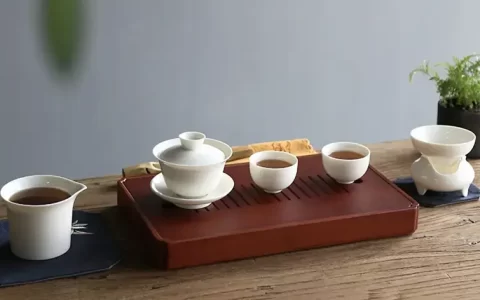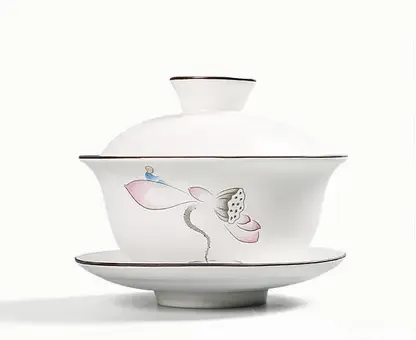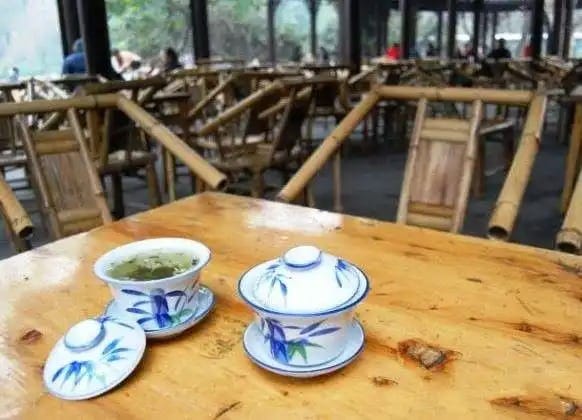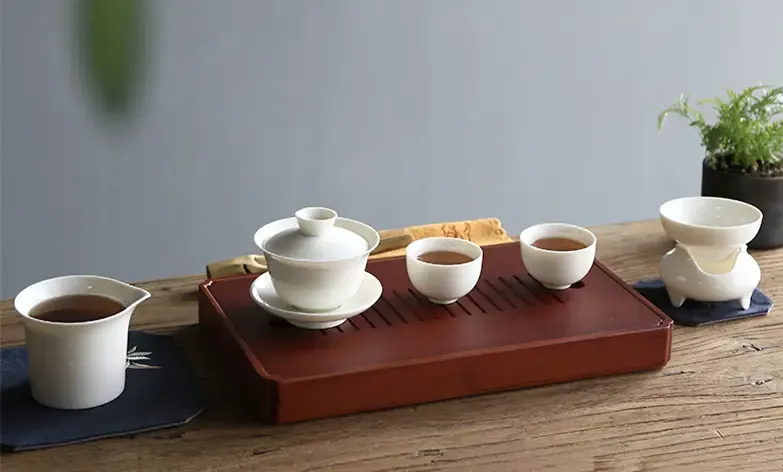
Blog
What is a gaiwan? The origin of the San Cai gaiwan

The lidded bowl, also known as the “Three Talents Bowl” or “Three Talents Cup,” is a type of Han Chinese tea ware consisting of a lid on top, a base below, and a bowl in the middle. The lid represents heaven, the base represents earth, and the bowl represents humanity, symbolizing the harmony between heaven, earth, and humanity. It is also a manifestation of the Chinese nation’s time-honored tea culture. The gaiwan did not exist from ancient times. It primarily originated after Zhu Yuanzhang of the Ming Dynasty abolished tea cakes and promoted loose-leaf tea. The main form of tea presentation became loose-leaf tea, and the brewing method evolved to primarily use teapots and cups. Later, to allow hot water to fully steep the tea leaves, a lid was added to the bowl. As it continued to evolve and develop, by the Yongzheng period of the Qing Dynasty, using a gaiwan to brew tea gradually became widespread.

The gaiwan tea set consists of a bowl, a lid, and a tea tray, featuring a unique design and exquisite craftsmanship. The tea bowl is wider at the top and narrower at the bottom, with a lid that fits snugly inside the bowl. The tea tray serves as a base to support the set. When drinking tea, the lid does not easily slip off, and the tea boat provides support while also preventing burns. Additionally, holding the tea boat keeps the center of gravity stable, and there is no need to lift the lid when drinking. Simply opening it halfway allows the tea leaves to remain in the bowl while the tea broth slowly seeps out, creating a pleasant experience and avoiding the hassle of a blocked teapot or spilling tea. The lid of the gaiwan tea bowl is placed inside the bowl. If you want the tea broth to be stronger, you can gently scrape the surface of the water with the lid, causing the tea water to circulate throughout the bowl. A light scrape results in a lighter flavor, while a heavier scrape yields a stronger taste—this is its ingenuity.
However, there are currently two main forms of gaiwan usage. Let me share a simple overview with tea enthusiasts:
1. As a gaiwan tea set for individual use
When gaiwans first became popular during the Qing Dynasty, they were used as personal tea utensils, combining both brewing and drinking functions. This involves placing tea leaves into the gaiwan, adding water to brew, and then presenting the entire gaiwan to the guest for drinking—what people commonly refer to as “gaiwan tea.” The custom of drinking gaiwan tea is prevalent in most regions inhabited by the Han and Hui ethnic groups, particularly in major and medium-sized cities in China’s southwestern regions. The most famous examples include “Sichuan Chengdu Gaiwan Tea” and “Ningxia Baobao Gaiwan Tea.” Today, in places like Chengdu, Sichuan, and Kunming, Yunnan, gaiwan tea has become a traditional method of tea drinking in local teahouses and tea shops. It is also commonly used in family settings when entertaining guests.

2. As a tea infuser for multiple users
Using a lidded bowl as a tea infuser is currently a widely adopted method and aligns with the understanding of most tea enthusiasts. The reason why the lidded bowl is used as a teapot is primarily because when brewing tea with a lidded bowl, one can see the tea liquor, making it easier to control the concentration of the tea liquor; one can also directly observe the condition of the tea leaves after brewing; additionally, after brewing, the lidded bowl is easier to clean than a teapot. Thus, the lidded bowl has evolved into a brewing utensil, paired with fair cups and tea cups, forming a new type of tea ware combination.

At today’s various tea competitions and when tea evaluators assess tea grades, they prefer to use lidded bowls. Brewing tea with a lidded bowl offers numerous advantages, including simplicity, ease of use, no absorption of flavors, rapid heat conduction, practicality, elegance, and beauty. Additionally, lidded bowls are affordably priced, making them highly popular among the general public. As a result, a large number of white porcelain lidded bowl brands have emerged in the market. The above is an introduction to the lidded bowl. If there are any inaccuracies, tea enthusiasts are welcome to leave comments for correction.
